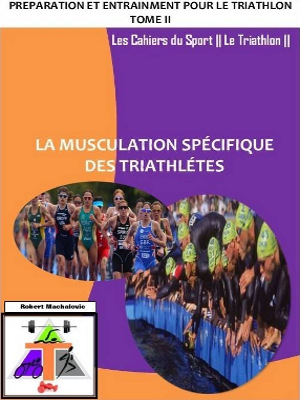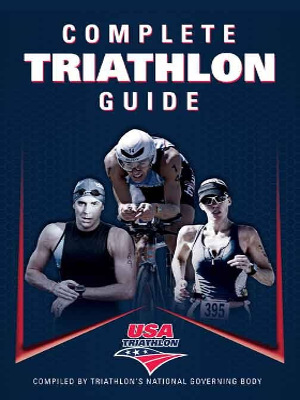
EL HAOUAT MedHassan
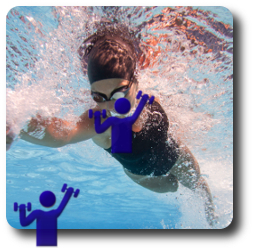 The tapering strategy used by many swimmers to optimize competition performance has been defined as "a progressive non-linear reduction of the training load during a variable period of time, in an attempt to reduce the physiological and psychological stress of daily training and optimize sports performance" (Mujika & Padilla 2000). The aim of the taper before the main competitions of the season is to elicit substantial improvements in performance. These performance gains have been variously attributed to increased levels of muscular force and power (Trappe et al. 2000), and improvements in neuromuscular, hematological, and hormonal function, and/or the psychological status of the swimmer (Mujika & Padilla 2000).
The tapering strategy used by many swimmers to optimize competition performance has been defined as "a progressive non-linear reduction of the training load during a variable period of time, in an attempt to reduce the physiological and psychological stress of daily training and optimize sports performance" (Mujika & Padilla 2000). The aim of the taper before the main competitions of the season is to elicit substantial improvements in performance. These performance gains have been variously attributed to increased levels of muscular force and power (Trappe et al. 2000), and improvements in neuromuscular, hematological, and hormonal function, and/or the psychological status of the swimmer (Mujika & Padilla 2000).
Recovery or off-season
The main features of this phase are maintaining an active approach with at least three low- to moderateintensity aerobic swims completed each week, specialized programs to target weaknesses in individual fitness profiles, and dietary control to maintain body composition.
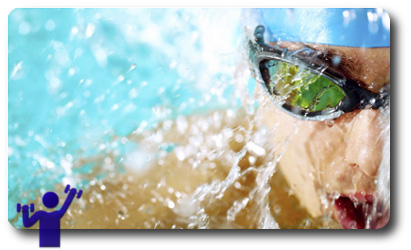 There are few studies that have directly addressed the issue of the most effective program for swimmers to follow during the off-season or in short breaks from training and competition.
There are few studies that have directly addressed the issue of the most effective program for swimmers to follow during the off-season or in short breaks from training and competition.
There is, however, a significant body of literature that details the Lime course of training adaptations with training and loss of fitness during detraining (Counsilman & Counsilman 1991; Mujika & Padilla 2000). A typical strategy for the off-season involves a marked 50-70% reduction in the frequency, volume, and intensity of training.
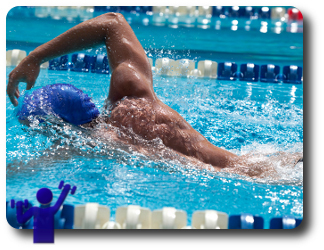 The following is an example of the features of periodization that may encompass a typical 14-week swimming preparation fora national championships or major international meet.
The following is an example of the features of periodization that may encompass a typical 14-week swimming preparation fora national championships or major international meet.
Macrocycle 1: aerobic (weeks 1-4)
As in most training programs the initial phase involves the development or reestablishment of endurance fitness. This serves as the basis for the subsequent development of aerobic and anaerobic capacities and the functional utilization of these capacities. Functional utilization refers to increased swimming speed at a given metabolic load. Apart from the underlying physiological adaptations, improved endurance will lead to an increased ability to cope with fatigue and more rapid recovery from the stresses of speed training and competition. In particular, the aim is to develop the capacity and efficiency of the cardiorespiratory system.
A creative approach to the planning of training sessions is essential to maintain an adequate adaptation stimulus. Once the various cycles are organized within the season or yearly plan, the detailing of individual training sessions can begin.
 Some coaches make the mistake of not properly integrating speed and endurance in the training pro- gram. This is particularly evident in the endurance phase where too great an emphasis on the volume of training may impair speed. It is an oversimplification to think that only low to moderate intensity volume work is undertaken in an "endurance" week or phase, and that only speed work is done in a "speed" week. If insufficient speed work is undertaken during the endurance phase, a swimmer may pay the price later on when they are unable to reproduce race or competitive speeds. Conversely, swimmers may become overloaded and prone to fatigue, illness, and injury if they do too much speed work without the benefits of some complementary endurance training. Highly trained swimmers can use endurance training to recover from and prepare for speed training.
Some coaches make the mistake of not properly integrating speed and endurance in the training pro- gram. This is particularly evident in the endurance phase where too great an emphasis on the volume of training may impair speed. It is an oversimplification to think that only low to moderate intensity volume work is undertaken in an "endurance" week or phase, and that only speed work is done in a "speed" week. If insufficient speed work is undertaken during the endurance phase, a swimmer may pay the price later on when they are unable to reproduce race or competitive speeds. Conversely, swimmers may become overloaded and prone to fatigue, illness, and injury if they do too much speed work without the benefits of some complementary endurance training. Highly trained swimmers can use endurance training to recover from and prepare for speed training.
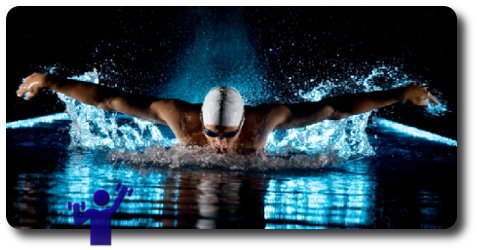 Over the pasl 10 years. the factors that contribute ta swimming successlully at top national and international competitions have been analyzed by leading sports scientists such as Dr Bruce Masan of Ihe Australien Instilule of Sport. Competilion analysis breaks down racing into its various components.
Over the pasl 10 years. the factors that contribute ta swimming successlully at top national and international competitions have been analyzed by leading sports scientists such as Dr Bruce Masan of Ihe Australien Instilule of Sport. Competilion analysis breaks down racing into its various components.
Sex Differences
Males tend to swim faster than females. Women have higher percentage of body fat than men, whereas men have more muscle weight. This results in women floating better and showing a greater swimming economy, 30 % lower energy cost than men have been reported (McArdle, Katch and Katch 1996).
Strength
Swimming power and especially upper body strength have been demonstrated to be crucial to success in sprint swimming. 86% of one's performance in a 25-m front crawl sprint result from the swimmers' strength and the ability to develop power. For the competitive distance swimmer the strength component is less. At 100, 200, and 400m, the contribution of muscular strength drops to 74, 72 and 58%, respectively. During slow, low-intensity swimming most of the muscle force is generated by slow twitch fibers. As the muscle tension requirements increase, the fast twitch fibers are incorporated. In sprint events (50-200m) demanding maximal strength, the second group of fast twitch fibers sets in. The tendency is that swimmers have higher percentage of slow twitch muscle fibers in their shoulders and particularly musculus deltoideus. However, muscle fiber composition appears not to be a deciding factor in successful competition. Swimming is performed almost totally with concentric contractions (Costill, Maglischo and Richardson 1992).
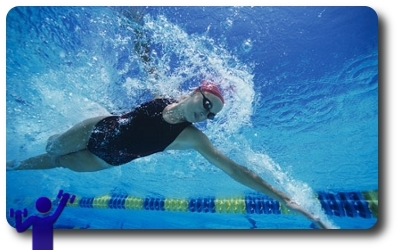
The coach is an important person with his or her ability to observe and make subjective assessments of performance. But there is also a need to have objective measurements, being more valuable in giving some dimension to the result, e.g. time, distance, score (McLatchie 1993). The physiological tests are designed to follow the swimmer's physical capabilities, improvements achieved, and to assist in planning the training program (Costill, Maglischo and Richardson 1992). Total fitness consists of strength, speed, flexibility and endurance, and all of these aspects should be evaluated.
The following points should be considered before assessing fitness:
- pre-test procedures
- the purpose and intention of the test
- the suitability of the test and the equipment used
- the statistical criteria for the test
- the use of the test results (McLatchie 1993).
![]() The initial position in freestyle is on the breast, with both arms stretched to the front and the legs extended to the back.
The initial position in freestyle is on the breast, with both arms stretched to the front and the legs extended to the back.
Arm movement
The arm movement in freestyle is alternating, i.e., while one arm is pulling/pushing, the other arm is recovering. The arm strokes also provide most of the forward movement in freestyle. The move can be separated into three parts, the pull, the push, and the recovery.
From the initial position, the arm sinks slightly lower and the palm of the hand turns 45 degree with the thumb side of the palm towards the bottom. This is called catching the water and is in preparation for the pull. It also gives the muscles a brief rest during swimming. The pull movement follows a semicircle with the elbow higher than the hand and the hand pointing towards the body center and downward. The semicircle ends in front of the chest at the beginning of the ribcage.
" frameborder="0" allowfullscreen>
21 top laws of swimming
1. Three of the most important components of swimming are: technique,technique, technique.
2. Strive for optimum, not maximum, performance.
3. Learn to balance, align, and stabilize your body first. Everything else will become easier.
4. Seek the path of least resistance.
5. Find the path of most resistance.
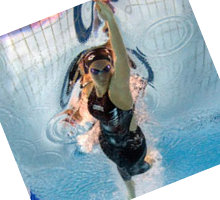 The science of swimming is extremely complicated, involving the interaction of propulsive forces from the swimmer’s arms and legs and the drag caused by water. However, by applying new research courtesy of fluid dynamics and supercomputers, every swimmer can swim faster.
The science of swimming is extremely complicated, involving the interaction of propulsive forces from the swimmer’s arms and legs and the drag caused by water. However, by applying new research courtesy of fluid dynamics and supercomputers, every swimmer can swim faster.
Few sports are as precise as swimming. Cyclists can blame the wind, runners the terrain and team sports players the referee! Swimming, on the other hand, has exact distances and water is, well, constant. However, although ‘pure’ swimmers race in the pool and triathletes in open water (or OW as it’s referred to), the advent of long-distance swimming entering the Olympics in Beijing and fast-moving swimsuit and wetsuit technology means that many ‘constants’ in the world of swimming aren’t so constant after all.
The ‘sports ground’ for swimming (H2O!) is often quoted as being 1000 times denser than air. Trying to move efficiently through this very dense medium is not nearly as easy as other sports that take place through air. For example, top cyclists hit over 60kmh in short events on the track or in an end-of-stage sprint. Elite runners average over 30kmh for a quarter mile and over 40kmh at the end of sprints. By contrast, even the world’s best swimmers top just 8kmh (5mph) over the 100m sprint. Yet that is still superhuman. Most fitness swimmers would fail to approach even half that speed. All that splashing around by even the most enthusiastic fitness swimmer is soon put to shame by the 12 year old who glides through the water with ease. In short, swimming is about brain not brawn, and it’s technique not triceps or trapezius size that matters.
S'inscrire Pour Accéder à la Totalité du Site
Conseils Sports Coaching Formation

